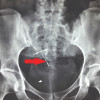
 IJCP Editorial Team
IJCP Editorial Team
Risk of Uterine Rupture with Vaginal Birth after Cesarean in Twin Gestations
Women with a previous cesarean delivery may opt for a subsequent vaginal birth or repeat cesarean. Vaginal birth after cesarean holds a more imminent risk of uterine rupture, described as the disruption of all uterine layers, causing maternal-fetal morbidity or mortality. However, the risk of uterine rupture in patients with twin gestations who undergo different delivery methods remains unclear.
The present study determined if there is an increased risk of uterine rupture in patients with twin gestations attempting vaginal birth after cesarean (VBAC) compared with planned repeat cesarean delivery (PRCD) by exploring PubMed, Cochrane Library, and CINAHL.
The results were described as follows-
- The analysis comprised of 4 retrospective studies including 7699 participants, 2305 of whom attempted VBAC and 5394 underwent PRCD.
- The absolute risk of uterine rupture in the VBAC group was 0.87% and PRCD group was 0.09%.
- The VBAC group had a marked higher rate of uterine rupture than the PRCD group.
Thus it was concluded that even though VBAC possess higher rates of uterine rupture in twin pregnancies than PRCD, the absolute risk of uterine rupture remains low in both groups. After considering individual risk factors, a vaginal birth may be proposed as a safe option for women with twin pregnancies and a history of cesarean delivery.
SOURCE- Baradaran K. Risk of Uterine Rupture with Vaginal Birth after Cesarean in Twin Gestations. Obstet Gynecol Int. 2021;2021:6693142. Published 2021 Mar 31. doi:10.1155/2021/6693142

IJCP Editorial Team
Comprising seasoned professionals and experts from the medical field, the IJCP editorial team is dedicated to delivering timely and accurate content and thriving to provide attention-grabbing information for the readers. What sets them apart are their diverse expertise, spanning academia, research, and clinical practice, and their dedication to upholding the highest standards of quality and integrity. With a wealth of experience and a commitment to excellence, the IJCP editorial team strives to provide valuable perspectives, the latest trends, and in-depth analyses across various medical domains, all in a way that keeps you interested and engaged.












Please login to comment on this article